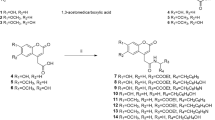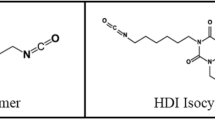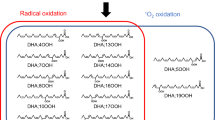Abstract
Aim:
To investigate the effects of docosahexaenoic acid (DHA) on melanin synthesis and related regulatory mechanisms.
Methods:
B16F10 mouse melanoma cells were exposed to DHA for 3 d, and melanin content and tyrosinase activity were measured. Western blot analysis was used to analyze the protein levels in DHA-mediated signal transduction pathways.
Results:
DHA (1–25 μmol/L) did not affect the viability of B16F10 cells, but decreased α-MSH-induced melanin synthesis in a concentration-dependent manner. DHA concentration-dependently reduced tyrosinase activity in the cells, but did not affect mushroom tyrosinase activity in a cell-free system. Furthermore, DHA treatment significantly reduced tyrosinase level without affecting microphthalmia-associated transcription factor (MITF) in the cells. DHA did not activate ERK and Akt in the cells. Pretreatment with the proteasome inhibitor MG132 (80 nmol/L) abolished DHA-induced tyrosinase reduction.
Conclusion:
DHA inhibits melanogenesis in B16F10 cells in vitro through increasing tyrosinase degradation. The results suggest that DHA may be a potential agent for treatment of hyperpigmentary disorders of skin.
Similar content being viewed by others
Log in or create a free account to read this content
Gain free access to this article, as well as selected content from this journal and more on nature.com
or
References
Stillwell W, Wassall SR . Docosahexaenoic acid: membrane properties of a unique fatty acid. Chem Phys Lipids 2003; 126: 1–27.
Stillwell W . Docosahexaenoic acid: a most unusual fatty acid. Chem Phys Lipids 2008; 153: 1–2.
Storey A, McArdle F, Friedmann PS, Jackson MJ, Rhodes LE . Eicosapentaenoic acid and docosahexaenoic acid reduce UVB- and TNF-alpha-induced IL-8 secretion in keratinocytes and UVB-induced IL-8 in fibroblasts. J Invest Dermatol 2005; 124: 248–55.
Rahman M, Kundu JK, Shin JW, Na HK, Surh YJ . Docosahexaenoic acid inhibits UVB-induced activation of NF-kappaB and expression of COX-2 and NOX-4 in HR-1 hairless mouse skin by blocking MSK1 signaling. PLoS One 2011; 6: e28065.
Kondo T, Hearing VJ . Update on the regulation of mammalian melanocyte function and skin pigmentation. Expert Rev Dermatol 2011; 6: 97–108.
Schiaffino MV . Signaling pathways in melanosome biogenesis and pathology. Int J Biochem Cell Biol 2010; 42: 1094–104.
Hearing VJ, Tsukamoto K . Enzymatic control of pigmentation in mammals. FASEB J 1991; 5: 2902–9.
Ando H, Kondoh H, Ichihashi M, Hearing VJ . Approaches to identify inhibitors of melanin biosynthesis via the quality control of tyrosinase. J Invest Dermatol 2007; 127: 751–61.
Costin GE, Hearing VJ . Human skin pigmentation: melanocytes modulate skin color in response to stress. FASEB J 2007; 21: 976–94.
Busca R, Ballotti R . Cyclic AMP a key messenger in the regulation of skin pigmentation. Pigment Cell Res 2000; 13: 60–9.
Vachtenheim J, Borovansky J . Transcription physiology” of pigment formation in melanocytes: central role of MITF. Exp Dermatol 2010; 19: 617–27.
Levy C, Khaled M, Fisher DE . MITF: master regulator of melanocyte development and melanoma oncogene. Trends Mol Med 2006; 12: 406–14.
Jang JY, Lee JH, Kang BW, Chung KT, Choi YH, Choi BT . Dichloromethane fraction of Cimicifuga heracleifolia decreases the level of melanin synthesis by activating the ERK or AKT signaling pathway in B16F10 cells. Exp Dermatol 2009; 18: 232–7.
Kim DS, Park SH, Kwon SB, Park ES, Huh CH, Youn SW, et al. Sphingosylphosphorylcholine-induced ERK activation inhibits melanin synthesis in human melanocytes. Pigment Cell Res 2006; 19: 146–53.
Kim DS, Jeong YM, Park IK, Hahn HG, Lee HK, Kwon SB, et al. A new 2-imino-1,3-thiazoline derivative, KHG22394, inhibits melanin synthesis in mouse B16 melanoma cells. Biol Pharm Bull 2007; 30: 180–3.
Oka M, Nagai H, Ando H, Fukunaga M, Matsumura M, Araki K, et al. Regulation of melanogenesis through phosphatidylinositol 3-kinase-Akt pathway in human G361 melanoma cells. J Invest Dermatol 2000; 115: 699–703.
Smalley K, Eisen T . The involvement of p38 mitogen-activated protein kinase in the alpha-melanocyte stimulating hormone (alpha-MSH)-induced melanogenic and anti-proliferative effects in B16 murine melanoma cells. FEBS Lett 2000; 476: 198–202.
Bentley NJ, Eisen T, Goding CR . Melanocyte-specific expression of the human tyrosinase promoter: activation by the microphthalmia gene product and role of the initiator. Mol Cell Biol 1994; 14: 7996–8006.
Bertolotto C, Abbe P, Hemesath TJ, Bille K, Fisher DE, Ortonne JP, et al. Microphthalmia gene product as a signal transducer in cAMP-induced differentiation of melanocytes. J Cell Biol 1998; 142: 827–35.
Tachibana M . MITF: a stream flowing for pigment cells. Pigment Cell Res 2000; 13: 230–40.
Yasumoto K, Yokoyama K, Takahashi K, Tomita Y, Shibahara S . Functional analysis of microphthalmia-associated transcription factor in pigment cell-specific transcription of the human tyrosinase family genes. J Biol Chem 1997; 272: 503–9.
Bertolotto C, Busca R, Abbe P, Bille K, Aberdam E, Ortonne JP, et al. Different cis-acting elements are involved in the regulation of TRP1 and TRP2 promoter activities by cyclic AMP: pivotal role of M boxes (GTCATGTGCT) and of microphthalmia. Mol Cell Biol 1998; 18: 694–702.
Yavuzer U, Keenan E, Lowings P, Vachtenheim J, Currie G, Goding CR . The microphthalmia gene product interacts with the retinoblastoma protein in vitro and is a target for deregulation of melanocyte-specific transcription. Oncogene 1995; 10: 123–34.
Glickman MH . Getting in and out of the proteasome. Semin Cell Dev Biol 2000; 11: 149–58.
Halaban R, Cheng E, Zhang Y, Moellmann G, Hanlon D, Michalak M, et al. Aberrant retention of tyrosinase in the endoplasmic reticulum mediates accelerated degradation of the enzyme and contributes to the dedifferentiated phenotype of amelanotic melanoma cells. Proc Natl Acad Sci U S A 1997; 94: 6210–5.
Nakamura K, Yoshida M, Uchiwa H, Kawa Y, Mizoguchi M . Down-regulation of melanin synthesis by a biphenyl derivative and its mechanism. Pigment Cell Res 2003; 16: 494–500.
Kageyama A, Oka M, Okada T, Nakamura S, Ueyama T, Saito N, et al. Down-regulation of melanogenesis by phospholipase D2 through ubiquitin proteasome-mediated degradation of tyrosinase. J Biol Chem 2004; 279 27774–80.
Hall AM, Krishnamoorthy L, Orlow SJ . 25-Hydroxycholesterol acts in the Golgi compartment to induce degradation of tyrosinase. Pigment Cell Res 2004; 17: 396–406.
Kono M, Dunn IS, Durda PJ, Butera D, Rose LB, Haggerty TJ, et al. Role of the mitogen-activated protein kinase signaling pathway in the regulation of human melanocytic antigen expression. Mol Cancer Res 2006; 4: 779–92.
Kawano M, Matsuyama K, Miyamae Y, Shinmoto H, Kchouk ME, Morio T, et al. Antimelanogenesis effect of Tunisian herb Thymelaea hirsuta extract on B16 murine melanoma cells. Exp Dermatol 2007; 16: 977–84.
Price ER, Horstmann MA, Wells AG, Weilbaecher KN, Takemoto CM, Landis MW, et al. alpha-Melanocyte-stimulating hormone signaling regulates expression of microphthalmia, a gene deficient in Waardenburg syndrome. J Biol Chem 1998; 273: 33042–7.
Acknowledgements
This study was supported by a grant (A100179) from the Korea Healthcare Technology R&D Project, Ministry of Health and Welfare, Republic of Korea.
Author information
Authors and Affiliations
Corresponding author
Rights and permissions
About this article
Cite this article
Balcos, M., Kim, S., Jeong, Hs. et al. Docosahexaenoic acid inhibits melanin synthesis in murine melanoma cells in vitro through increasing tyrosinase degradation. Acta Pharmacol Sin 35, 489–495 (2014). https://doi.org/10.1038/aps.2013.174
Received:
Accepted:
Published:
Issue date:
DOI: https://doi.org/10.1038/aps.2013.174
Keywords
This article is cited by
-
Chemical Composition and Tyrosinase Inhibitory Activities of Fatty Acids Obtained from Heterotrophic Microalgae, S. limacinum and C. cohnii
Applied Biochemistry and Biotechnology (2023)
-
Influence of plasma-activated compounds on melanogenesis and tyrosinase activity
Scientific Reports (2016)



